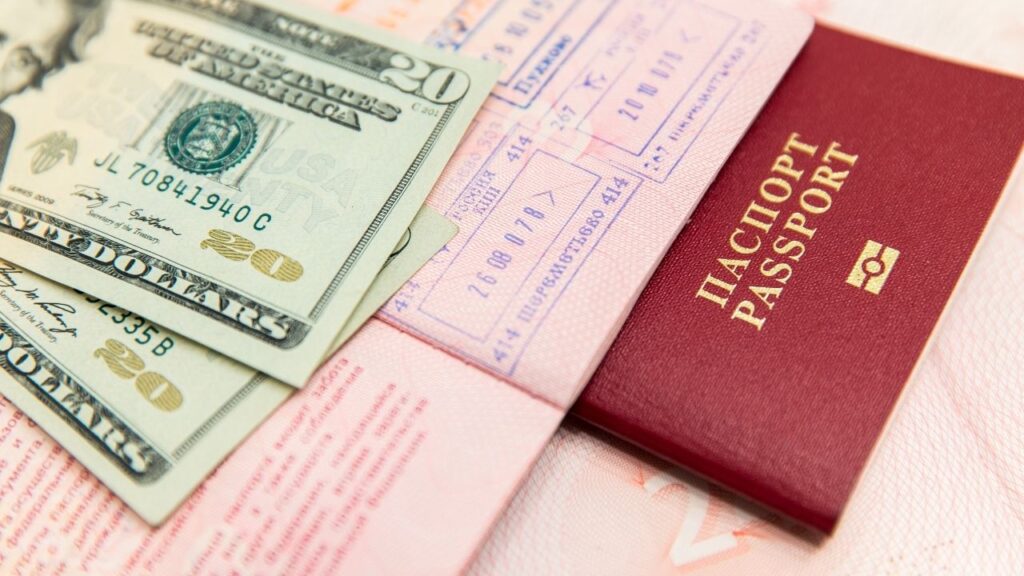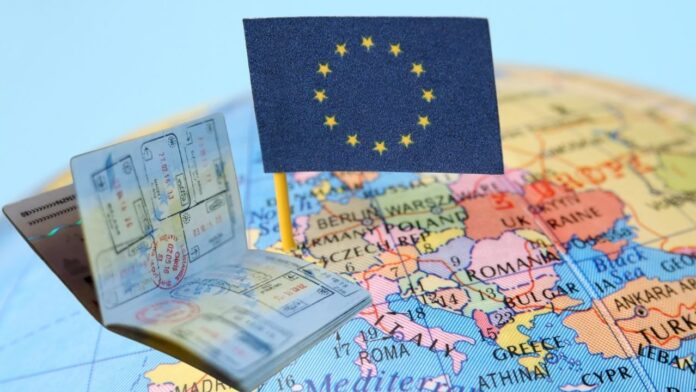The European Union is preparing for one of its most significant border control changes in decades. From 12 October 2025, the long-planned Entry/Exit System (EES) will begin rolling out across all Schengen external borders. This system is expected to transform the way non-EU travelers, including British citizens, enter and leave Europe.
As the launch date approaches, confusion has spread online, with myths ranging from “mandatory travel insurance” to “Brexit punishment.” Many of these claims are misleading or outright false. Below, we break down the most common misconceptions and provide clear, fact-checked explanations to help travelers prepare.
What Is the EU’s Entry/Exit System (EES)?
The EES is a large-scale digital border management system designed to replace the traditional method of manually stamping passports.
Instead of a border guard placing a physical ink stamp in your passport, the EES will:
- Digitally record your entry and exit dates into the Schengen Area.
- Store biometric data, including facial images and fingerprints.
- Keep your passport details (name, nationality, travel document number, etc.) in a secure EU-wide database.
The system applies to all non-EU citizens traveling for short stays—defined as up to 90 days in any 180-day period. This includes visa-exempt travelers such as citizens of the UK, USA, Canada, Japan, Australia, and many others.
The EU says the main goals of the EES are to:
- Strengthen border security by preventing overstays.
- Make border checks faster and more consistent.
- Collect reliable data to help manage migration and tourism flows.
- Replace the outdated passport stamping system with a modern, automated alternative.
It will be introduced in phases starting October 2025 and fully operational by April 2026.
Myth 1: British Travelers Will Need Proof of Medical Insurance
One of the most widespread claims is that UK citizens will soon have to present proof of travel insurance at the EU border. This has worried many older travelers and those with pre-existing medical conditions, as insurance policies can be costly.
The truth: The European Commission has confirmed that no such requirement exists. The EES does not change entry requirements for UK travelers.
Currently, many British visitors rely on the Global Health Insurance Card (GHIC), issued free by the UK’s NHS, which grants access to medically necessary healthcare in EU countries and Switzerland, either at the same cost as locals or free of charge. While the GHIC is not a substitute for full travel insurance, it remains accepted under EU law.
What UK travelers still must show at the border under post-Brexit rules:
- Proof of the purpose of travel (e.g., holiday, business trip).
- Evidence of sufficient funds to cover the trip.
- Booked accommodation (hotel reservation, rental agreement, or invitation from host).
- Return or onward ticket out of the Schengen Zone.
So while insurance is strongly recommended for peace of mind, it is not legally required for entry under the EES.
Myth 2: Travelers Will Need a New Visa

Another common misunderstanding is that once the EES begins, visa-exempt travelers will suddenly need visas to visit Europe.
The truth: The EES does not change visa policy. If you currently don’t need a visa for short stays (up to 90 days in a 180-day period), that remains the same.
What changes is that your stay will now be electronically logged instead of manually stamped. This makes it easier for border authorities to track how long you’ve stayed in the Schengen Zone and to detect overstayers.
It’s important not to confuse the EES with the European Travel Information and Authorisation System (ETIAS), which will start in late 2026.
- ETIAS is an online travel authorization (similar to the US ESTA).
- It will cost around €20 and last for 3 years (or until your passport expires).
- It will be required for travelers from visa-exempt countries, including the UK, USA, Canada, Australia, and others.
But ETIAS is not a visa—it’s simply a pre-travel check.
Myth 3: The EES Is Punishment for Brexit
Some British commentators have suggested the EES is aimed at making travel harder for UK citizens after Brexit.
The truth: The EES has nothing to do with Brexit. Planning for the system began in the early 2010s, years before the UK voted to leave the EU. In fact, the UK was involved in discussions about EES while it was still an EU member.
The EES applies to all non-EU nationals, whether they come from the UK, the USA, or elsewhere. Its purpose is to modernize border control, not penalize specific countries.
Meanwhile, the UK has introduced its own Electronic Travel Authorisation (ETA) system, effective from April 2025. Like ETIAS, the ETA is a digital travel permit linked to your passport. Travelers who don’t need a UK visa must apply for an ETA before entering, and it will allow multiple visits for up to six months within a two-year period.
This shows that digital border systems are a global trend, not political retaliation.
Myth 4: The EES Applies to EU Citizens Too
Some travelers worry that everyone—including EU citizens—will have to use EES.
The truth: The EES only applies to non-EU nationals.
Who is not affected:
- EU citizens.
- Non-EU citizens holding long-term visas or residence permits.
- Cross-border workers.
- Heads of state and other exempt categories.
Even non-EU travelers coming for study, research, volunteering, or exchange programs are not included under EES.
Myth 5: Extra Border Fees Will Be Charged

Another concern is that travelers will be hit with new fees when crossing borders under the EES.
The truth: The EES is free of charge. No additional fees will be collected at the border.
The only cost travelers should anticipate is for ETIAS (from 2026), which will be €20 for most travelers aged 18–70. Children, elderly travelers, and family members of EU citizens may be exempt.
Myth 6: Border Crossings Will Become Slower and More Chaotic
One of the most practical concerns is whether EES will create longer queues at already busy airports, train stations, and land borders.
The truth: During the first few months of rollout, some delays are expected as both travelers and border staff adjust to the new system. However, once fully operational, the EES is expected to make crossings faster and more efficient.
Key improvements will include:
- Self-service kiosks at airports for biometric checks.
- Potential pre-registration options to save time.
- Automated gates using facial recognition and fingerprints.
While the initial adjustment may frustrate some travelers, the long-term goal is to reduce waiting times, improve security, and make border management smoother.
Myth 7: The EES Will Store All Personal Information
Concerns have been raised about data privacy, with some fearing that EES will track travelers’ activities across Europe.
The truth: The EES will only store specific, limited data:
- Name and passport details.
- Facial scans and fingerprints.
- Dates and places of entry and exit.
It will not track your movements inside the EU, your spending, or your private activities. All data will be handled under strict EU data protection laws (GDPR), which set limits on who can access the data and how long it can be kept.
The purpose is simple: to ensure travelers respect the 90-day rule for short stays.
The Entry/Exit System is not about making travel harder, but about bringing Europe’s borders into the digital age. For UK travelers—and other non-EU nationals—most entry requirements remain the same as they have been since Brexit.
Expect some teething problems at airports and land borders during the rollout, but in the long run, the EES will make border crossings more efficient, secure, and modern.
If you’re planning travel in late 2025 or 2026, the main advice is simple: arrive early at the airport, keep your documents in order, and stay updated on both the EU’s EES and the UK’s ETA systems.


















![10 Countries With the Best Healthcare in the World [Statistical Analysis] Countries With the Best Healthcare in the World](https://articleify.com/wp-content/uploads/2025/07/Countries-With-the-Best-Healthcare-in-the-World-1-150x150.jpg)










![20 Most Beautiful Bucket-List Castles in The World [Ranked] Most Beautiful Bucket-List Castles in The World](https://articleify.com/wp-content/uploads/2025/08/Most-Beautiful-Bucket-List-Castles-in-The-World-150x150.jpg)